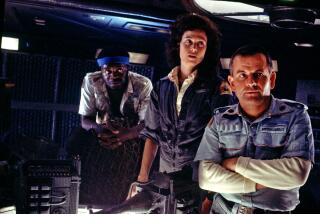How It Works
- Share via
New software developed by Alias/Wavefront allows animators to design realistic “synthetic characters.” A look at the process:
1. Chris Landreth, who created “the end,” scanned his own head to form a three-dimensional model. The scanner “reads” the bulges and flat area of the face.
2. Looking at his face in a mirror, Landreth was able to isolate the muscles he used to make various expressions. He then mapped these muscles onto the computer-generated face.
3. After constructing the facial muscles, Landreth began controlling them. To “move” a muscle, he clicked on points and pulled them in various directions. A smile, for example, is made by selecting points in the character’s cheeks and eyes and compressing them, pulling the mouth upward. The mouth is then pulled away from the center of the face. Landreth works on each part of the face individually, forming layers. The computer eventually uses these layers to create realistic face motion.
4. Using the layering technique, Landreth created a series of emotional expressions. A computer tool called ShapeShifter allows Landreth to copy each of the muscle poses into its own “control slider.” Muscle poses contained on these sliders are adjustable between 0 (no effect) and 1 (full effect). Pictured are the settings for rage, which requires the use of may muscles.
Sources: Alias/Wavefront, Computer Graphics World.


